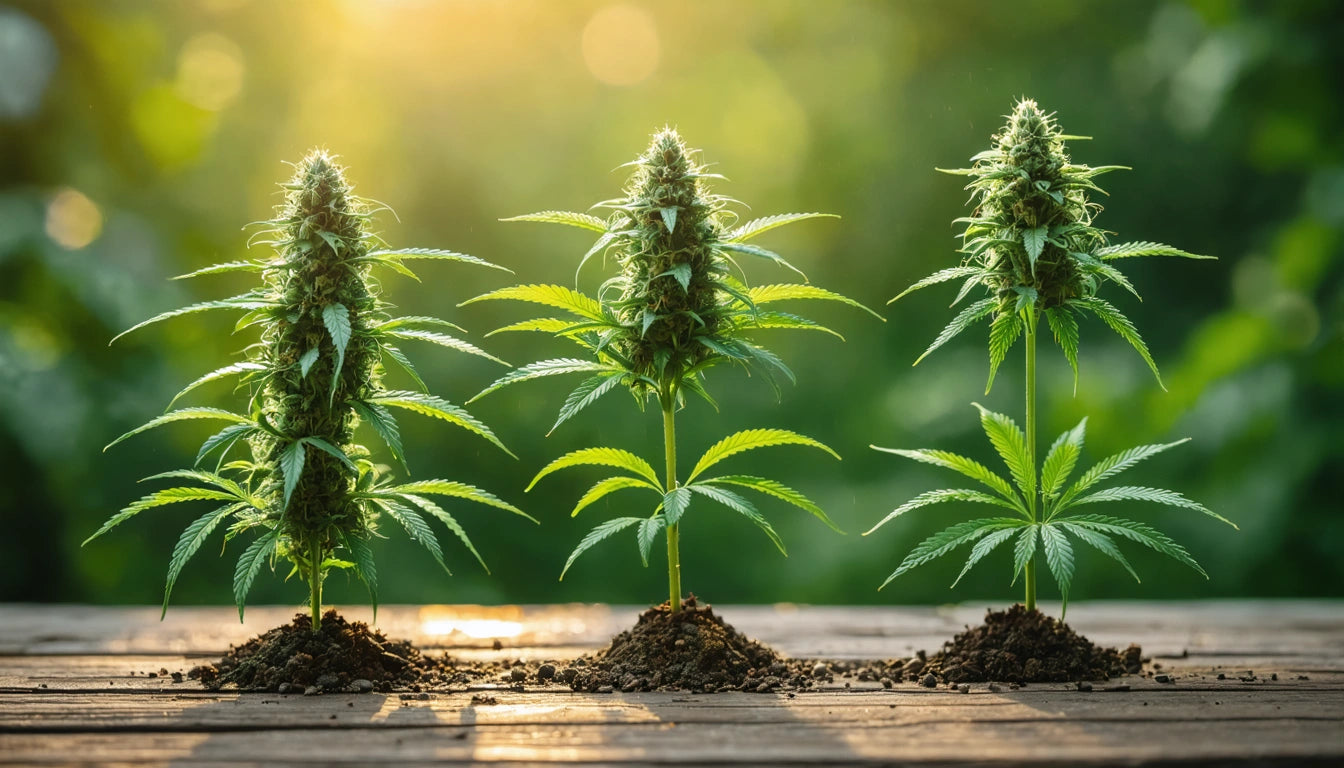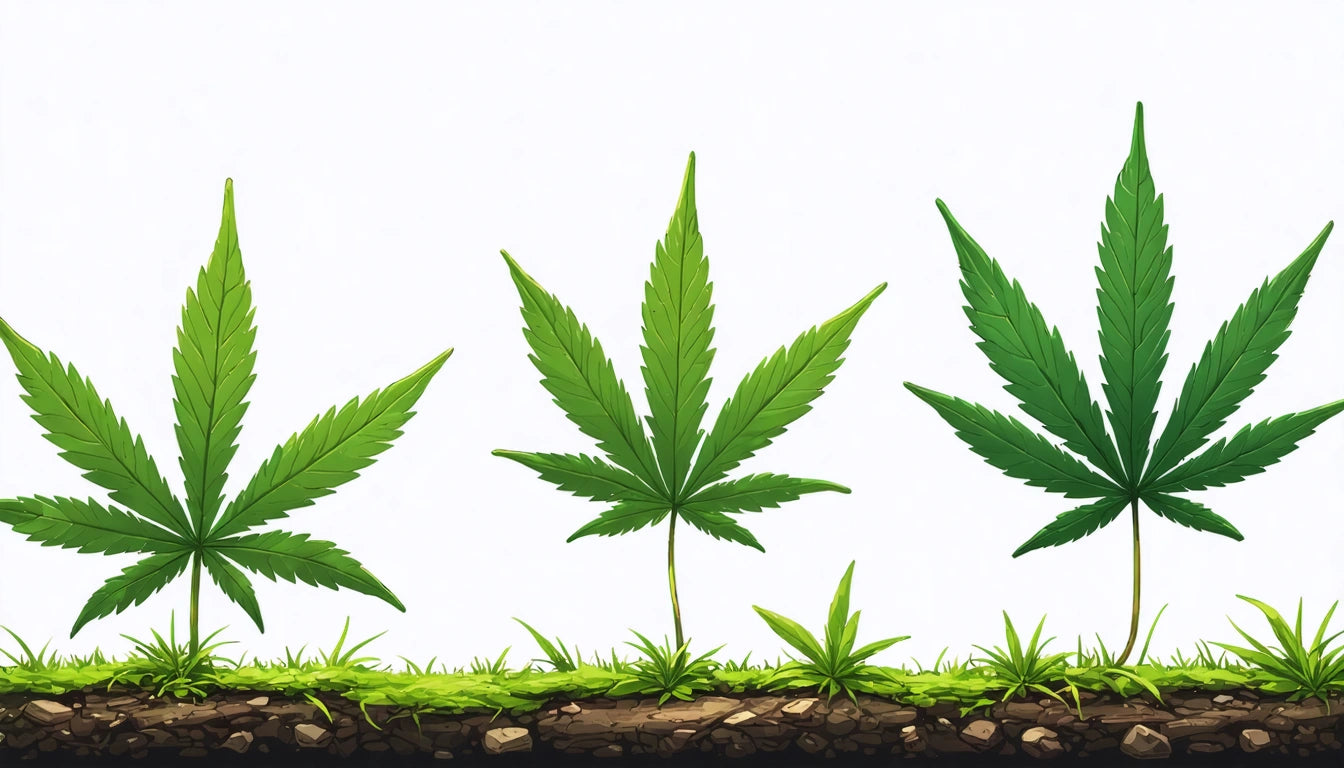Table of Contents
- What Are Autoflowering Cannabis Seeds?
- Autoflowering vs. Regular Seeds: Key Differences
- Benefits of Autoflowering Cannabis
- Feminized Autoflowering Seeds: Double Advantage
- Growing Autoflowering Cannabis: Tips for Success
- Seed Production from Autoflowers: What to Know
- Future of Autoflowering Genetics: Innovation and Potential
Understanding Autoflowering Cannabis Seeds: Benefits and Differences from Regular Seeds
Cannabis cultivation has evolved significantly over the years, with autoflowering seeds representing one of the most revolutionary developments for both novice and experienced growers. These specialized seeds have transformed how cannabis is grown, offering unique advantages that address many common cultivation challenges.
What Are Autoflowering Cannabis Seeds?
Autoflowering cannabis seeds produce plants that automatically transition from vegetative growth to flowering based on age rather than light cycle changes. This genetic trait comes from Cannabis ruderalis, a subspecies that evolved in harsh northern regions where growing seasons are short and daylight hours inconsistent.
Unlike regular cannabis plants that require specific light cycles (typically 12 hours of darkness) to trigger flowering, autoflowering plants will flower regardless of light exposure. According to this comprehensive guide on autoflower seeds, most autoflowering varieties complete their entire lifecycle in just 8-10 weeks from germination.
Autoflowering vs. Regular Seeds: Key Differences
The distinction between autoflowering cannabis seeds and regular seeds extends beyond just their flowering triggers:
- Light Dependency: Regular seeds produce photoperiod-dependent plants that flower only when light hours decrease, while autoflowers flower based on age.
- Growth Cycle: Autoflowers typically complete their lifecycle in 8-10 weeks, while regular plants may take 3-5 months or longer.
- Plant Size: Autoflowering plants generally remain smaller and more compact than their photoperiod counterparts.
- Yield Potential: Regular seeds typically produce higher yields per plant, though autoflowers can compensate through multiple harvests per season.
- Training Flexibility: Regular plants can be trained extensively, while autoflowers have limited training windows due to their rapid development.
These differences make autoflowering seeds particularly attractive for discrete home growing, limited space setups, and regions with challenging climates or short summers.
Benefits of Autoflowering Cannabis
The rising popularity of autoflowering seeds, as explored in this analysis of auto seeds in the US, stems from several key advantages:
Speed and Efficiency
The rapid growth cycle of autoflowering plants allows for multiple harvests per season outdoors or year-round indoor cultivation with minimal setup changes.
Beginner-Friendly
With no need to monitor and adjust light cycles, autoflowers simplify the growing process significantly, making them ideal for novice cultivators.
Discretion and Space Efficiency
Their naturally compact size makes autoflowers suitable for stealth growing in small spaces like closets, balconies, or alongside garden vegetables.
Climate Adaptability
The ruderalis genetics provide enhanced resilience to temperature fluctuations, pests, and mold, making them viable in less-than-ideal growing environments.
Feminized Autoflowering Seeds: Double Advantage
What are auto flowering feminized seeds? They represent the combination of two beneficial cannabis breeding technologies. Feminized seeds are genetically modified to produce only female plants (which produce the desired flowers), eliminating the need to identify and remove male plants. When combined with autoflowering genetics, they offer growers maximum convenience and efficiency.
This comparison of autoflower vs. feminized seeds explains how feminized autoflowers deliver the benefits of both worlds: guaranteed female plants that flower automatically based on age rather than light cycles.
For commercial operations, this combination minimizes labor and maximizes space utilization, as every plant will produce marketable flowers without requiring separate growing areas for different light cycles.
Growing Autoflowering Cannabis: Tips for Success
While autoflowering cannabis is generally easier to grow, maximizing results requires understanding their unique needs:
Light Requirements
Although autoflowers don't require light cycle changes to flower, they benefit from 18-20 hours of light daily throughout their lifecycle for optimal yields.
Container Selection
Because autoflowers have a limited growth period, many growers plant them directly in their final containers (usually 3-5 gallons) to avoid transplant stress that could stunt growth.
Nutrient Needs
Autoflowers typically require lighter feeding than photoperiod plants, particularly during early growth stages. This guide on autoflowering cannabis cultivation recommends starting with half-strength nutrients and adjusting based on plant response.
Training Techniques
Due to their short lifecycle, aggressive training methods like topping are often avoided with autoflowers. Instead, gentle low-stress training early in the vegetative stage can improve yields without risking recovery time.
Safety considerations are also important when growing cannabis at home, particularly for those with children. Proper safety measures similar to those used for medications should be implemented to prevent accidental access to both growing supplies and finished products.
Seed Production from Autoflowers: What to Know
Can you get seeds from autoflowering cannabis? Yes, but with some important considerations. Autoflowering plants can produce seeds if pollinated, either deliberately or accidentally. However, there are several factors to understand:
- Seeds from first-generation autoflowers may not reliably maintain autoflowering traits if cross-pollinated with photoperiod plants.
- Creating stable autoflowering seeds requires controlled breeding over multiple generations.
- Most commercial autoflowering strains are F1 hybrids, meaning seeds collected from them will show varied traits in subsequent generations.
For growers interested in seed production, understanding the complete growth and flowering timeline becomes especially important to time pollination correctly.
Future of Autoflowering Genetics: Innovation and Potential
Autoflowering cannabis continues to evolve rapidly as breeders focus on addressing historical limitations. Modern autoflowering strains now offer significantly improved potency, yield, and terpene profiles compared to early versions.
The future looks promising with developments in several areas:
- Super-autoflowers with extended flowering periods but higher yields
- Specialized medicinal autoflowering strains with targeted cannabinoid profiles
- Enhanced terpene production for improved flavor and aroma
- Further climate resilience for outdoor growing in extreme conditions
As legalization expands globally, autoflowering genetics are positioned to play an increasingly important role in both commercial and home cultivation due to their efficiency, consistency, and adaptability to various growing environments.
For growers looking to maximize results with autoflowers, this resource on maximizing autoflower yields provides advanced techniques and genetic selection strategies that can help achieve results rivaling traditional photoperiod plants.











Leave a comment
All comments are moderated before being published.
This site is protected by hCaptcha and the hCaptcha Privacy Policy and Terms of Service apply.